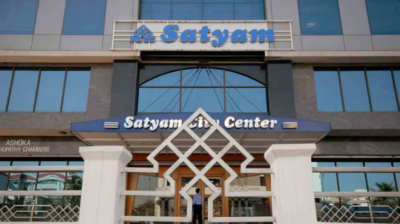Introduction: The Beginning of Something Big
In 2007, Sachin Bansal and Binny Bansal, two former Amazon employees, saw an untapped opportunity in India’s growing internet space. The idea was simple: create an e-commerce platform where Indians could buy products online, starting with books. Little did they know that their journey would evolve into a major battle against the world’s largest retailer—Amazon.
In the early days, Flipkart wasn’t the giant we know today. It was a small startup with just two guys working out of a rented apartment. But they had a vision: to make online shopping easy and accessible for everyone in India. The dream wasn’t just about selling products online; it was about changing the way people in India shopped forever.
But like any business, the road to success was filled with ups and downs. Flipkart didn’t have it easy, and their story is one of innovation, perseverance, and learning from mistakes. Let’s take a journey through the highs and lows of Flipkart’s rise to e-commerce supremacy.
The Early Struggles: The Leap of Faith
When Flipkart first started, it wasn’t just battling competitors—it was battling skepticism. The idea of buying things online wasn’t familiar to many people in India. Most people preferred shopping in physical stores, and the internet wasn’t something everyone trusted for financial transactions. In a country where cash is king, Flipkart had to convince people that online shopping was safe and worth it.
The first hurdle? Payment methods.
Back in 2007, credit and debit cards weren’t as commonly used as they are today. Flipkart’s founders realized this, so they decided to introduce cash-on-delivery (COD) as an option. This allowed customers to pay for their orders only when the product was delivered, a game-changer that gave people confidence in shopping online. It was this simple yet effective idea that got people on board and started Flipkart’s rise.
But even with COD in place, delivery logistics were still a challenge. India’s infrastructure was not as advanced, and reaching customers in remote towns and villages was a nightmare. Flipkart had to rely on third-party couriers, and delays were common. For a business that thrived on quick delivery, this was a huge problem.
Turning Point: Building the Logistics Backbone
As Flipkart grew, so did its challenges. The demand for faster deliveries was rising, but third-party couriers couldn’t keep up. Flipkart made a bold decision: they decided to build their own logistics arm. They called it eKart.
This was a risky move. Building a logistics network from scratch required massive investment. It wasn’t just about buying delivery trucks; it was about building warehouses, developing software, and creating a team that could handle the complex logistics of delivering across India. But it worked.
eKart became Flipkart’s secret weapon. With their own delivery system, Flipkart could offer faster and more reliable service, even in the most remote areas. This was a major turning point—it helped Flipkart differentiate itself from Amazon and other competitors. It was the first step towards becoming India’s e-commerce leader.
The Growth Phase: Acquisitions and Expanding Horizons
With a strong logistics foundation in place, Flipkart could now focus on growing its product range. The next big move was to expand beyond books. In 2014, Flipkart made its first major acquisition: Myntra, an online fashion retailer. This was a strategic move, as fashion was becoming a fast-growing segment in the Indian e-commerce market.
By acquiring Myntra, Flipkart didn’t just get a fashion brand; it also gained access to Myntra’s customer base, its team, and its expertise in online retail. This helped Flipkart expand into fashion and establish itself as a one-stop shop for all kinds of products—from books to electronics to fashion.
A few years later, Flipkart made another acquisition: Jabong, another fashion e-commerce platform. These acquisitions weren’t just about expanding their product range; they were also about creating a larger, more diverse customer base and reducing risk by having a wide variety of offerings.
But even as Flipkart grew, it wasn’t all smooth sailing. In 2014, Flipkart raised $1 billion in funding from investors like Tiger Global and Accel Partners, but the competition was fierce. Amazon, the world’s largest e-commerce company, was also investing heavily in India, and Flipkart had to keep up.
The Struggle with Amazon: Competing at the Top
By 2017, Flipkart was facing fierce competition from Amazon, which had already established a strong presence in India. Both companies were pouring millions of dollars into advertising, technology, and logistics. It was a battle of giants, and Flipkart had to find ways to stay ahead.
One of Flipkart’s responses was to double down on its strengths. While Amazon focused on selling everything from books to gadgets to groceries, Flipkart focused on becoming the best in the Indian market. Flipkart focused on offering a more localized experience, like regional language options, local payment methods, and products tailored to Indian preferences.
Despite the intense competition, Flipkart’s market share kept growing. By 2018, it had become clear that Flipkart was no longer just a competitor to Amazon—it was a leader in its own right. And then came the big news: Walmart bought a 77% stake in Flipkart for $16 billion.
The Walmart Acquisition: The Big Breakthrough
The acquisition by Walmart was a defining moment in Flipkart’s journey. With the financial backing of a global retail giant like Walmart, Flipkart could now scale faster than ever before. Walmart brought global expertise, advanced technologies, and a massive supply chain to the table. This gave Flipkart the resources it needed to take on Amazon and become the top player in India’s e-commerce market.
The Walmart acquisition also allowed Flipkart to expand its offerings, strengthen its logistics, and improve its customer service. Flipkart’s market share continued to grow, and in many ways, it had finally become India’s e-commerce leader, ahead of Amazon.
Lessons Learned: What Flipkart’s Story Can Teach Us
- Understand Your Customers Deeply
Flipkart succeeded because it understood what Indian customers wanted. The introduction of COD was one of the first examples of how Flipkart tailored its offering to local needs. Understand your audience and create solutions that meet their specific needs.
- Don’t Be Afraid to Innovate
The decision to build eKart was risky, but it was the right one. Innovation and taking bold steps can give your business a unique advantage over competitors.
- Stay Resilient in the Face of Competition
No matter how fierce the competition, Flipkart stayed focused on its mission to serve the Indian market better than anyone else. Stay true to your vision, and don’t let competition distract you from your goals.
- Strategic Acquisitions Matter
Flipkart’s acquisitions were smart. Myntra and Jabong helped them expand quickly into new verticals and reach new customers. Acquiring other businesses can be an excellent way to fast-track your growth.
Takeaways for Your Business
- Localize Your Offerings:
If you’re expanding into new markets, understand local needs and preferences. Tailor your products, services, and even your payment methods to suit the market. - Invest in Your Infrastructure:
Like Flipkart invested in eKart, consider investing in your logistics and operations early. This will help you provide a better experience for your customers. - Stay Focused and Resilient:
Competitors will come and go. Stay focused on your long-term goals and keep adapting to your market. Resilience is key to building a successful business. - Look for Opportunities to Diversify:
Whether through partnerships or acquisitions, consider expanding your business portfolio. It can help reduce risks and provide stability during uncertain times.
Conclusion: Flipkart’s Legacy and What Lies Ahead
Flipkart’s story is one of incredible growth and resilience. From a small online bookstore to a giant e-commerce platform, Flipkart’s journey wasn’t always easy, but it was always strategic. Today, it’s a leader in India’s e-commerce space, but its story continues to inspire entrepreneurs everywhere to adapt, innovate, and persevere.
No matter where you are in your business journey, Flipkart’s ups and downs should serve as a reminder that success isn’t about avoiding failure—it’s about learning from it and moving forward.






